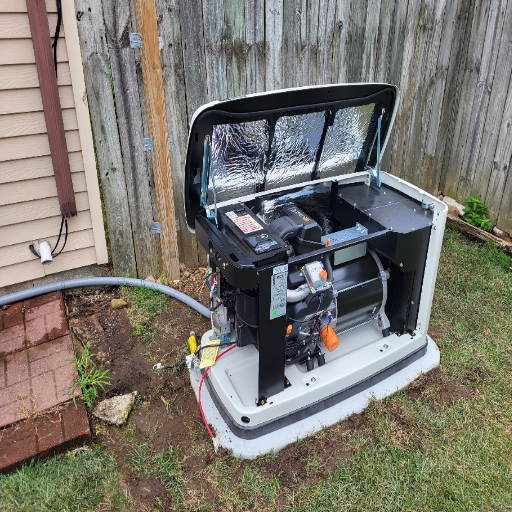Installing a home generator is a critical step in ensuring a reliable power supply during outages and other emergencies. Whether resulting from severe weather conditions, utility failures, or other unpredictable events, a properly installed generator can maintain essential household operations and provide peace of mind. This guide will serve as a comprehensive resource, covering everything from understanding the types of home generators available, choosing the right system for your specific power needs, and navigating the installation process. We will also explore key considerations such as safety protocols, regulatory compliance, and ongoing maintenance requirements to ensure optimal performance and longevity.
What is a Generator Installation?
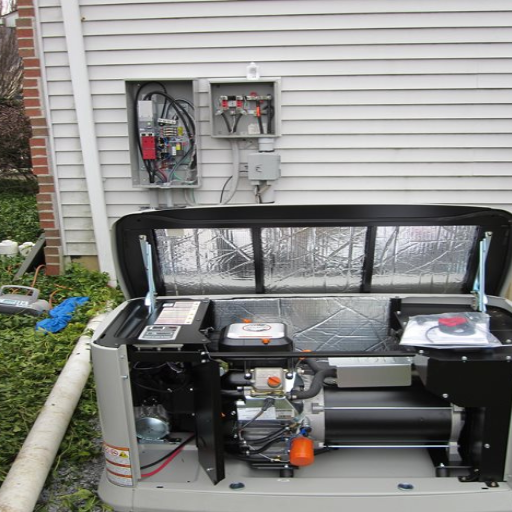
Understanding the Generator Installation Process
There are some important steps to follow in the correct installation of the generator that will guarantee the safety and proper functionality of the system while abiding by the local regulations. The first thing I do is evaluate the power needs of my house by estimating the wattage my crucial systems and devices will need. This entails calculating the starting and running wattage requirements of HVAC units, refrigerators, and medically important machinery. Usually, a residential standby generator can supply between 7,000 and 24,000 watts, so I use my load demand to set the capacity of the generator.
Now, it is time to find a suitable location for the generator. The location must be away from windows and doors, on a stable surface that allows for ventilation at least 5 feet away from the structure to reduce the risk of carbon monoxide buildup and adhere to local building code regulations. Additionally, I need to make sure that the installation of the switchboard will be done at the correct distance from the generator. For instance, an automatic transfer switch with 200 amps is appropriate for most applications of entire houses and my generator’s output.
The technical work focuses primarily on the gas and electricity connections. I hire a licensed electrician and plumber to hook up the generator to my home’s fuel system and electric panel, whether it is natural gas or propane. This way compliance with the National Electric Code (NEC) and the manufacturer’s requirements is guaranteed. After the installation, I verify system functionality during simulated outage conditions to check if the desired voltage and frequency (in this case 120/240V and 60 Hz) are produced.
To ensure undisturbed operation, I schedule annual servicing that includes checking oil levels, fuel quality, and battery condition, and performing load tests. This makes sure the system works optimally for years.
Choosing the Right Generator for Your Home
Your home’s power requirements should be taken into account when looking for the perfect generator. Some basic factors are listed below:
- Power Output (Wattage): Identify all the necessary appliances within your home and determine their wattage – this will help you comprehend your power needs. There are generally three types of generators available. Standby generators are typically used to backup power for the entire house – these range from 7,000 to 20,000 watts. Portable generators, used for limited circuits, come in 3000 to 8000 watts. Lastly, inverter generators with outputs of 1000 to 4000 watts are used for more sensitive electronic devices.
- Voltage and Frequency: Match the generator’s output to your home’s electrical system. Be sure to check the output of the generator and verify if it is compatible with the home’s electrical system.
- Running and Starting Watts: If the generator starts, check the level of wattage that it can supply. Make sure it can provide enough watts for appliances with high surges like HVAC systems or refrigerators.
- Transfer Switch Requirements: To ensure that power is transferred without any hindrances, a transfer switch should be installed. This is usually automatic, but ensure that it is compatible with the amperage of the house, which is typically around 200 amps for larger homes.
- Noise Levels: A dB generator is the preferred device if the generator is to be put near living spaces.
- Weather Resistance and Housing: Ensure that the generator is set in an area that is not exposed to danger; safety and durable standards must be adhered to.
Taking these factors into consideration alongside your power requirements and environment, users can choose a generator that will provide reliable emergency power without straining the electrical systems in their home. As always, consult licensed experts for proper sizing and installation.
How Much Does it Cost to Install a Generator?

Factors Affecting Installation Costs
Many components contribute to the cost of installing a generator such as requirement capacity, fuel type, and the level of detail needed for the installation. For starters, while we install a generator, we should keep in mind that there is a load we need to meet first. Load is measured as kW and our target appliances wattage will have to be totaled before purchase. We should know that bigger units cost more, and assume that we want to minimize the overall cost. Once the appropriate size is chosen, the overall power requirement of the facility needs to be considered which adds a bit more complexity to the decision.
The type of fuel used impacts expenses as well. In some cases, it is required to include extra plumbing to accommodate the gas line in natural gas-powered options. Diesel-powered units have their own set of complications such as a strong storage tank. Both systems need to meet local safety measures which add to the cost.
Lastly, the location is another factor that will impact expenses. The need for trenches above conductors and fuel lines will raise labor costs as well as material costs. Adding on, the enclosure in which the generator is housed also matters. Weatherproof units will increase the cost which the noise-controlled area does as well.
At last, expenses are determined by professions as well. This encompasses securing the relevant permits, paying for licensed electricians or contractors, and performing system checks for adherence to electrical standards (like the National Electrical Code [NEC] Regulations). Services rendered will always have a unique cost associated with them depending on the scope of work requirements and the location where the work is to be carried out. Looking at these aspects, it is much easier to put a budget towards the installation of a generator.
Comparing Costs: Whole-House vs. Partial Generators
The price difference between whole-house generators and partial generators is based on power levels, efficiency rating, ease of installation, and power demand requirements. Whole house generators are meant to provide backup power to the entire house which typically requires units with a capacity of 22 kW to 48 kW. Such a large fuel demand means larger reserves of natural gas, propan,e or diesel, better grade switches, and more advanced installation all of which increase both upfront expenses and ongoing costs. The average costs for installation of whole house generators can range from $10,000 to $20,000 depending on the region, labor expenses, and unique site conditions.
On the other hand, partial generators are meant to operate on specific circuits or appliances, and range between 3kW to 16kW in capacity. Because of lower capacity, these units are usually cheaper to purchase and install, with average prices ranging from $2,000 to $7,000. These units greatly alter the existing electric systems while consuming very little fuel due to their lowered output requirements.
- Power Output (kW): Whole-house (22 kW to 48 kW), Partial (3 kW to 16 kW). This difference speaks to their differing expected load coverage capacity.
- Fuel Consumption: Consumption for whole house generators is approximately 1.86-3.62 gallons per hour (using propane) as compared to other generator types which may use 0.5-1.2 gallons per hour. Whole house systems consume significantly more fuel compared to partial generators.
- Transfer Switch Type: Partial generators can make do with smaller individual circuit switches, while whole-house systems need automatic transfer switches that are capable of managing higher voltage demands.
- Installation Complexity: Whole house systems require larger concrete pads, multi-zone wiring, and advanced system integration. This extra circuitry adds greater labor and material costs compared to other generators.
The choice between whole-house generators and partial generators depends on budget, power requirements, and after-purchase goals. For greater reliability and features, whole house systems can be depended upon, while partial generators are a more cost-effective, albeit limited, alternative.
Why Choose a Home Standby Generator?
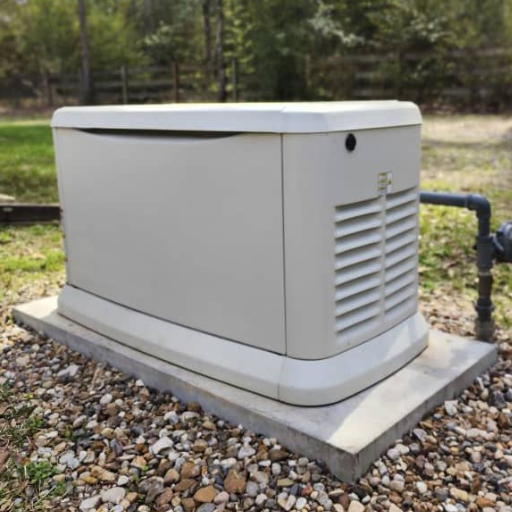
Benefits of a Standby Generator
A home backup generator provides reliable electrical power during blackouts, keeping essential systems and appliances running. These generators turn on automatically within seconds of a power outage, providing an effortless energy supply. Moreover, standby generators feature sophisticated Switch (ATS) systems that automatically change the power source with great accuracy and safety, ensuring minimal outages.
- Power Output: Most generators used at home for standby purposes are within the range of 7 kW to 26 kW, which is enough for a partial or whole house. The bigger generators ensure full support for HVAC equipment, refrigerators, lighting circuits, and more.
- Fuel Type: It runs on either natural gas or liquid propane (LP) with the rate of consumption varying from 1.6 to 3.0 gallons (LP) or 125 to 290 cubic feet per hour (natural gas) all depending on the load.
- Runtime: Continuously works given that there’s enough fuel, manual refueling won’t be necessary.
- Noise Levels: Ample sound insulation allows the Goslavy to work with loaded noise levels of 60-70 decibels, which is much quieter compared to portable units.
- Load Management: Built-in load shedding. Enable prioritized systems to avoid final overload.
The sophisticated features offer clarity as they grant households relief, convenience, and valuable long-term investments. Every household in need of reliable energy safety measures will truly understand the value a standby generator brings, especially during weather-related power outages or when essential electrical equipment requires a constant supply of energy.
How a Home Standby Generator Provides Peace of Mind
There are many benefits of having a home standby generator, but the most important one is the comfort of knowing that power is still available during outages. This is especially useful for managing important tasks within the home while ensuring safety. Nowadays, I can rest assured knowing that there are appliances such as heaters, ACs, medical equipment, and refrigerators that are safeguarded from being interrupted. These generators come with automatic transfer switches that sense when the main power goes out and switch over to the backup system in usually a few seconds. For instance:
- Power Output: The majority of residential units provide between 7 kW to 24 kW; this is more than enough to cover basic electricity demands based on the household size and the system’s hierarchy.
- Fuel Source: They use either natural gas or propane since both options are dependable and easily accessible, minimizing the need to refuel frequently.
- Voltage Regulation: Some advanced models allow stable voltage output, so there’s little to no risk of damage to more sensitive electronics.
These elements are defensible in light of industry norms on capacity and operational reliability, safety, and efficiency. Standby generators are highly reliable and easy to operate, making them essential for any home.
How to Maintain Your Generator?
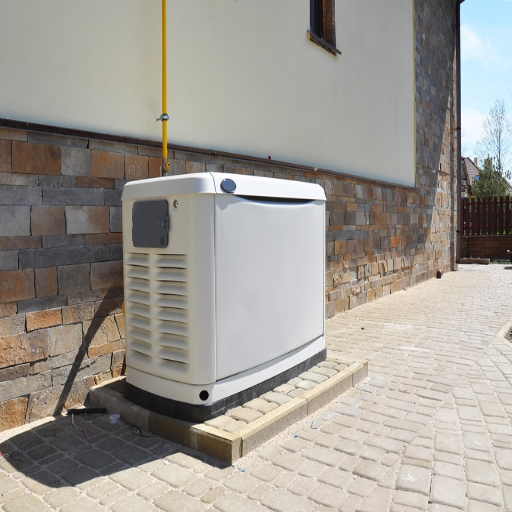
Scheduled Maintenance Tips
- Regular Inspections: Make sure to check the generator for cracks, loose connections, and fuel leaks. The belts, air filters, and hoses should also be checked. Routine inspections are essential as they aid in identifying and solving minor issues before they become severe problems.
- Change Oil and Oil Filter: It is suggested to change both the oil and oil filter after every 100 – 200 hours of operation; whichever comes first. Make sure to verify the manufacturer’s specifications. Always use the right oil grade based on your region’s climate, which for most regions is SAE 10W-30 or 15W-40 because of optimum engine performance and longevity.
- Test Battery Health: Check the generator’s battery, it should be fully charged and free of corrosion. Corrosion will decrease the voltage which should align with the specified amount by the manufacturer (around 12.6 to 13.8 volts for standby generators). If the battery is weak, then it will not be able to start the generator.
- Clean Air Filters: Air filters should be checked every 200 hours to ensure that they have not become clogged. In situations where they are clogged, a clean replacement will need to be installed. Air filters directly affect the engine’s efficiency, so it’s best to replace dirty filters when possible.
- Check Coolant Levels: Make sure that the coolant level of the reservoir for liquid-cooled models is filled to the required amount. Use the correct coolant mixture of 50% distilled water and 50% coolant to avoid overheating.
- Spark Plug Check: A cleaning and inspection routine is essential after every 100 hours of use, and a replacement should be done at the mark of 300 hours as long as the spark plugs show signs of wear, carbon buildup, or erosion.
- Load Test: Periodically, test out the generator under some load of 80% of its maximum watts for a few hours. This will make sure that it is properly functioning and helps pinpoint any potential performance issues.
Adhering to these simple steps and maintaining specific parameters will ensure that the generator sustains optimal performance, reliability, and a longer service life.
Common Generator Repair Issues
- Beginning Issues: There might be a problem with the generator starting up due to the battery being dead, the spark plugs being broken, or the fuel injector being blocked. If the battery voltage is lower than 12.4V, it should automatically be replaced. Also, ensure the spark plugs are not blocked with carbon so that they may ignite when needed. Moreover, fuel lines should be free of blockages or air leaks which disrupt the fuel flow.
- Intensity: Insufficient levels of coolant in the generator, busted thermostat, or obstacles to airflow are some reasons for a generator overheating. Make sure that the coolant-to-water ratio is around 50-50 and that the cooling system does not have any debris inside. The thermostat should also be checked to confirm it opens between 160 – 190 degrees Fahrenheit as that is the most optimal for most generators.
- Erratic Voltage Output: Changes in voltage will occur due to problems in the voltage regulator or old brushes in the alternator. Check the voltage output with a multimeter and see if it’s about 120V for single-phase and 240V for dual-phase generators. If the number differs from these standards, the voltage regulator should be replaced.
- Frequent Stalling: Stalling usually results from contamination of water fuel, improper adjustments to the carburetor, and dirt in the air filters. Look at the fuel to see if there is any water or debris and guarantee that a clean fuel supply is available. Replace or clean air filters if they are blocked, and modify the ladle settings and the fuel mixture of the carburetor according to the specifications of the manufacturer.
- Oil Leaks: Oil leaks are said to be attributed to gaskets that are already worn out, fittings that are loose, or overfilling the oil reservoir. Look at the seals or gaskets for any damages and tighten out any loose parts. Make sure the quantity of oil kept in the machine is within the range provided in the user’s manual to prevent overfilling.
Generators can continue to be dependable and productive for their intended purposes as long as these common problems are solved in a timely and orderly manner.
What Are the Frequently Asked Questions About Generator Installation?
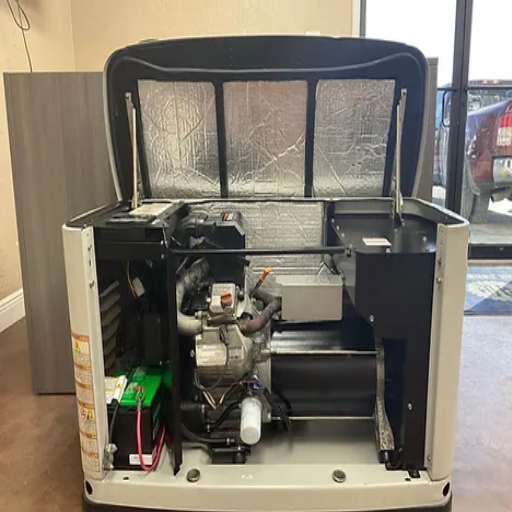
How Long Does Installation Take?
The duration of the installation of the generator is related to the amount of work required to set it up. For mid-range residential installations like standby generators, the process is going to take around 6 to 10 hours. Commercial units often come with massive generators which may come in the form of 1-3 day extensive structures.
- Site Preparation: The pouring of concrete pads and clearing out spaces for a faster setup of the generator heavily depends on the arrangement.
- Electrical Connections: Existing panels and furniture come with their own set of infrastructure which makes the task harder.
- Generator Size: Larger systems require a higher amount of wiring and structural adjustments.
- Fuel Setup: If the unit requires testing of the fuel line, configuring the propane and natural gas may end up being another lengthy task.
Carrying out preliminary assessments while ensuring easy availability of components makes the task easier while keeping it safe.
Do I Need a Transfer Switch?
I need a transfer switch if I set up a standby generator or any backup power system that interfaces with the electrical panel at my home or business. A transfer switch is necessary to transfer the electric load from the main utility grid to the generator safely and effectively. My home cannot be powered directly from the generator without the transfer switch. This poses a great danger to both myself and utility personnel who could be working on the power lines.
- Ampacity Rating: The transfer switch has to be matching my main electrical panel ampacity. It is quite common to have two hundred amp and one hundred amp panels, but some bigger homes have even more.
- Manual vs. Automatic Transfer: Automatic transfer switches (ATS) work best for those who have permanent standby generators because they allow power to be transferred during an outage. Manual switches, on the other hand, are cheaper, but they require the user’s involvement during power outages.
- Compatibility: In addition, the transfer switch has to be compatible with the output wattage of the generator. An ATS with a capacity of 10,000-20,000 watts is used with generators rated at 10,000-20,000 watts.
- Type of Usage: In case I only want to limit the circuits that I deem necessary, a load-side transfer switch will work best. A service side switch will be needed if whole-house coverage is desired.
- Fuel and Voltage Configuration: If my generator supports dual voltage operation, then the transfer switch should also support that output.
With the installation of a transfer switch, I guarantee compliance with electric codes, prevention of back feeding to the grid, and convenience in controlling power distribution in my house or building. This investment is important for establishing a safe and reliable backup power system.
Reference sources
Frequently Asked Questions (FAQs)
Q: What are the benefits of installing a home generator?
A: Installing a home generator ensures your home remains powered during outages, keeping essential appliances running and providing peace of mind. A generator can keep your home comfortable and functional, especially during emergencies.
Q: How do I choose the right size generator for my home?
A: To choose the right size generator, consider your home’s electrical panel capacity and the essential appliances you need to power. Consulting with an expert home generator service can help determine the best generator system for your needs.
Q: What is the difference between a portable generator and a whole-house generator?
A: A portable generator is smaller and can power select appliances, while a whole-house generator can power your entire home, automatically activating during outages. A whole-house generator is ideal if you want comprehensive backup power.
Q: Can I connect a generator to my house without a transfer switch?
A: It is not recommended to connect a generator to your house without a transfer switch, as it can be unsafe. A transfer switch ensures safe operation and prevents back-feeding electricity, which can be hazardous.
Q: How often should I schedule generator maintenance?
A: Annual generator maintenance is recommended to ensure optimal performance and reliability. Regular maintenance helps identify potential issues early and extends the lifespan of your generator.
Q: How long does a generator install service typically take?
A: A generator install can vary in time depending on the type and size of the generator, as well as site-specific factors. Most installations can be completed in one to two days by a professional service.
Q: What should I look for in customer reviews of generator services?
A: When reading customer reviews, look for feedback on the quality of service, reliability of the products and services offered, and the professionalism of the installation team. Positive reviews often highlight a company’s ability to ensure your home is well-prepared for power outages.
Q: Is it expensive to power your entire home with a whole-house generator?
A: The cost of a whole-house generator can vary based on the size and features of the generator. While the initial investment may be substantial, the benefits of uninterrupted power during outages can outweigh the costs, especially if you rely heavily on electricity.
Q: How do I get a standby generator installed at my home?
A: To have a standby generator installed, contact us or call us for a consultation. A professional technician will assess your home’s needs and recommend the best generator install solution, ensuring seamless integration with your home’s electrical system.



